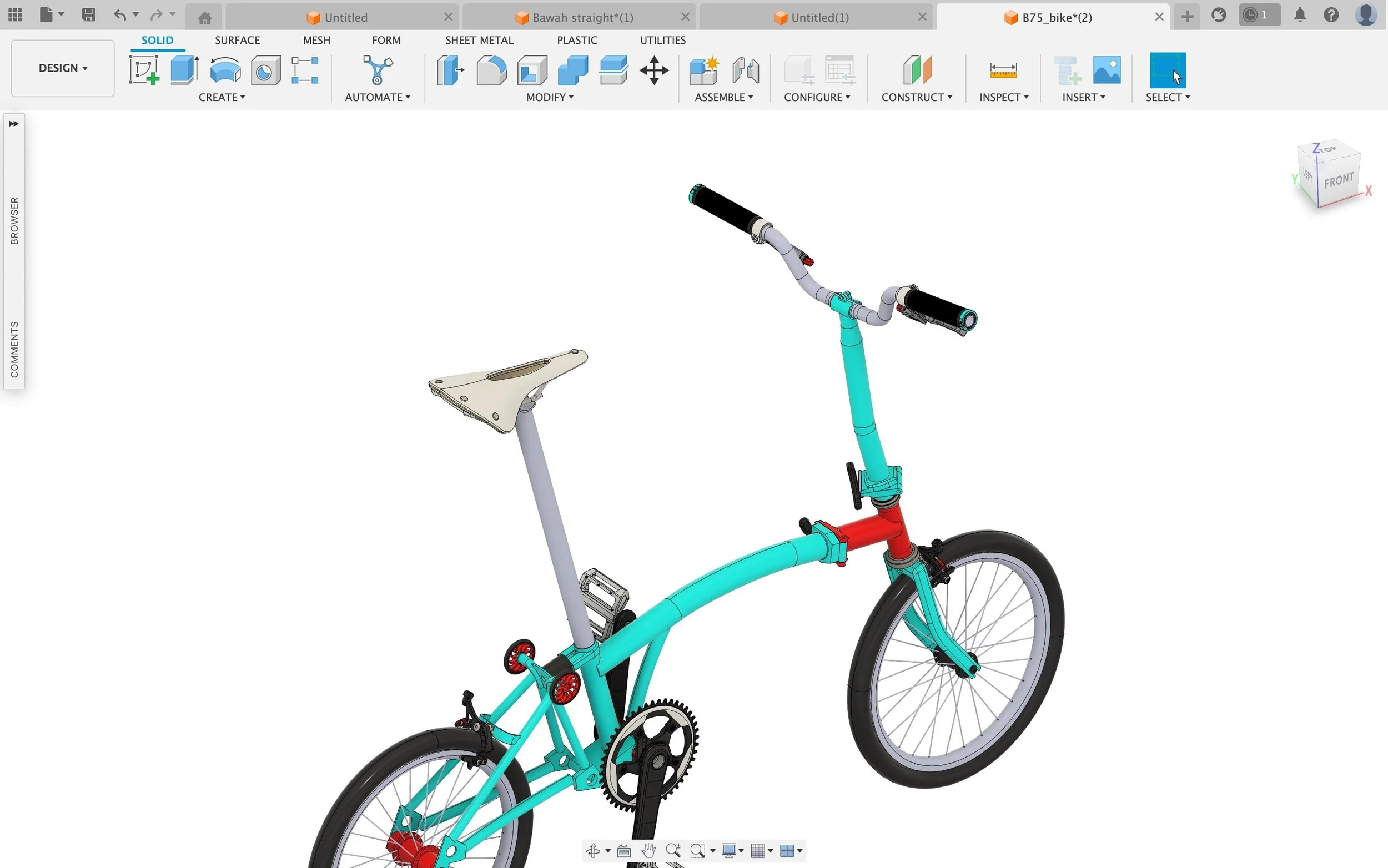ROLE
Individual project
Second Year Project @ Central Saint Martins
DURATION
2 months (8 weeks)
TOOLS
Fusion 360 l Rhino l Photoshop l Illustrator
SOS Bike – A safety beacon for cyclists
OVERVIEW
SOS Bike is a compact GPS and radio beacon designed to keep cyclists safe in emergencies. I identified three essential issues faced by riders: lack of discreet safety equipment, delays in alerting contacts after an accident, and the challenge of integrating technology seamlessly into bikes. To address these, I developed a small, hidden device that attaches securely to the bike and can send out location signals if triggered. The design emphasises subtlety, reliability, and ease of use, giving cyclists peace of mind without compromising style or ride experience.
Featured on Brompton
This project was highlighted directly on Brompton’s platform, showcasing the SOS Bike Beacon as a forward-thinking safety concept for urban riders. The video introduces my design as part of their vision for future cycling, recognising its blend of discretion, security, and compatibility with the iconic folding bike.
01 INTRO
Cycling in cities is growing, but safety remains a barrier for many. I set out to design a product that could make urban cycling feel more secure without compromising the lightweight, compact appeal of folding bikes like the Brompton. My focus was on discretion: a safety device that protects riders while blending seamlessly into their everyday setup.
I began by studying cycling accident statistics, commuter behaviour, and urban crime rates. Research showed that while folding bikes are popular in cities, users often worry about theft and personal safety when riding in unfamiliar or low-light conditions. I also looked at existing cycling accessories, most of which were either too visible, too bulky, or lacked smart emergency features. This gap highlighted the need for a safety tool designed specifically for the compact urban cycling lifestyle.
02 RESEARCH
03 EXPLOADED VIEWS
04 IDEATION
I explored different safety concepts; from lock-integrated alarms to wearable trackers, before focusing on a bike-mounted beacon. Sketches and early CAD explored placement options: under the seat, integrated into the frame, or hidden in the handlebars. The guiding idea was to merge function with invisibility, so that the rider could feel protected without advertising the device.
05 SKETCH MODELS
Inital Prototype Design: Card models and quick 3D prints helped test the form factor, size, and attachment system. I experimented with how the beacon could fold or hide within the Brompton’s compact geometry. These models clarified how the device should be small enough not to interrupt the folding mechanism while still housing the necessary electronics and antenna.
06 DEVELOPMENT
Using CAD, I refined the shell design, attachment clips, and weatherproof casing. Materials were chosen for durability and low weight, aligning with Brompton’s design standards. Internally, I planned for a GPS module, radio transmitter, and rechargeable battery, making the device both reliable and discreet. Iterations focused on creating a seamless aesthetic that matched Brompton’s identity while remaining intuitive to use.
07 FINALISATION
The SOS Beacon became a compact, fold-friendly safety solution for urban cyclists. It empowers riders with peace of mind, combining Brompton’s elegant form with a hidden emergency tool. The final design reinforced my approach to product design: balancing discretion, usability, and emotional reassurance in a way that enhances daily urban life.



